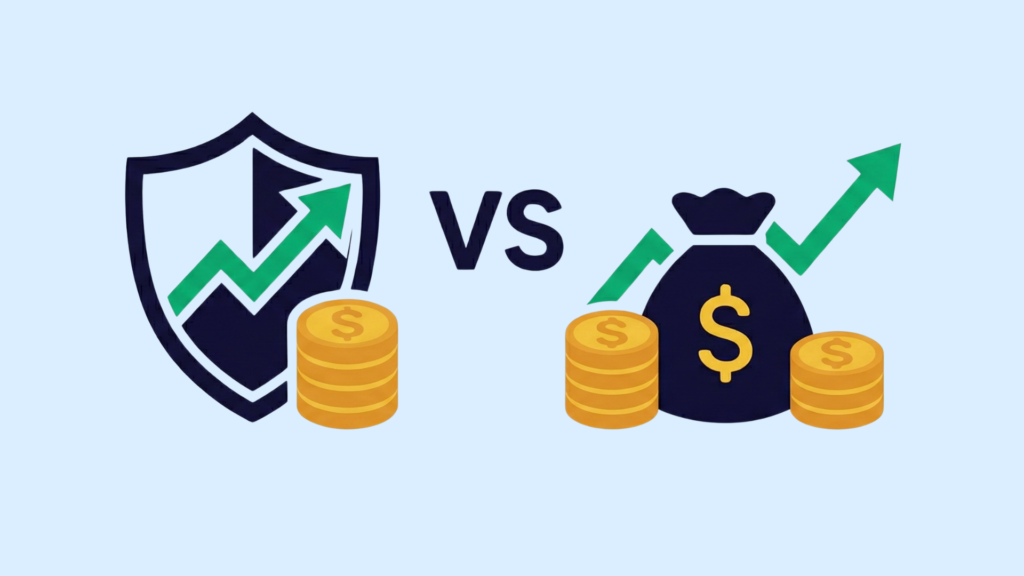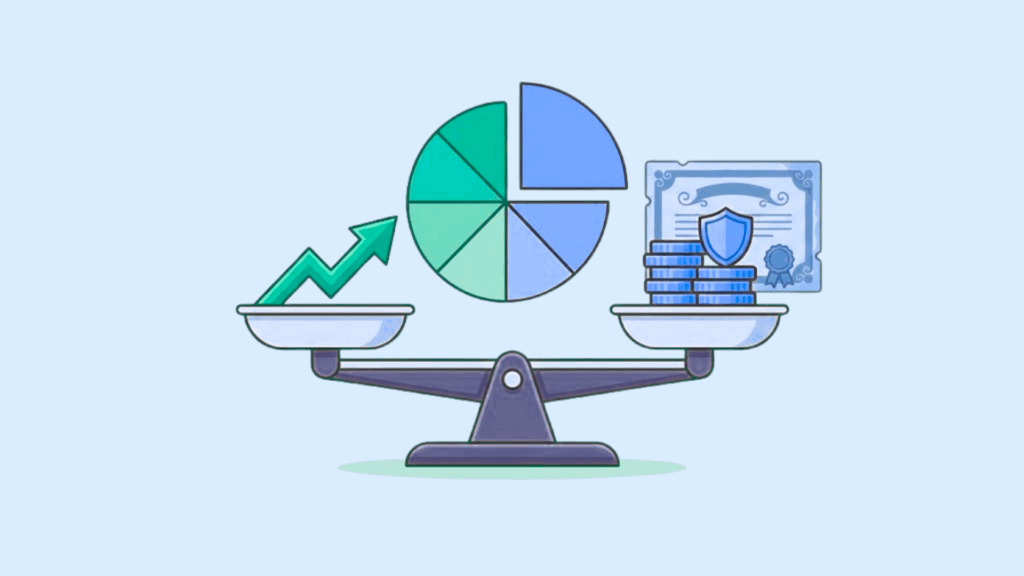When you invest in mutual funds for the long term, inflation can lower your real returns, and that’s where indexation helps. It adjusts your investment’s cost for inflation, so that you’re taxed only on actual gains, not on price increases caused by inflation.
In this blog, we’ll explain what indexation in mutual funds means, how it’s calculated, and the key benefits it offers for long-term investors looking to save on taxes and maximise real returns.
What is Indexation in Mutual Funds?
Indexation in mutual funds is a tax adjustment method that accounts for inflation while calculating long-term capital gains on your investments. It ensures that investors are taxed only on their real gains, and not on the portion of returns that simply compensates for inflation.
How Indexation Helps Reduce Tax Liability
Indexation directly reduces the amount of taxable capital gains by increasing the cost of acquisition in line with inflation.
Here’s how it helps:
- Inflation raises prices over time, reducing the real value of money.
- Indexation adjusts your investment’s purchase cost to reflect this inflation.
- The higher indexed cost means lower capital gains, and hence, lower tax liability.
For example, if you purchased mutual fund units for ₹1,00,000 and sold them for ₹1,40,000 after 3 years, the nominal gain is ₹40,000. But after applying indexation (say the inflation adjustment raises your purchase cost to ₹1,15,000), your taxable gain drops to ₹25,000, reducing your tax burden significantly.
How is Indexation in Mutual Funds Calculated?
The formula for calculating the adjusted cost of acquisition is:
Adjusted Cost of Acquisition = (Original Cost of Acquisition × CII of Year of Sale) ÷ CII of Year of Purchase
Where:
- CII = Cost Inflation Index (published annually by the Income Tax Department).
- Original Cost of Acquisition = Purchase rate of mutual fund units.
Example of Indexation Calculation
Here’s an example of how indexation is calculated:
- Purchase year: 2018–19 (CII = 280)
- Sale year: 2021–22 (CII = 317)
- Investment amount: ₹1,00,000
- Sale value: ₹1,40,000
Adjusted Cost of Acquisition = (₹1,00,000 × 317) ÷ 280 = ₹1,13,214
Capital Gain = Sale Value – Adjusted Cost = ₹1,40,000 – ₹1,13,214 = ₹26,786
This way, without indexation, the taxable gain would be ₹40,000. Whereas, with indexation, it reduces to ₹26,786.
Benefits of Indexation in Mutual Funds
Indexation offers a major advantage to long-term mutual fund investors, helping them keep more of their profits by reducing tax on capital gains. By adjusting the investment’s purchase price to account for inflation, indexation makes sure that you’re taxed only on the real gains, not on inflation-driven price increases.
Tax Benefit in Mutual Funds
The primary benefit of indexation in mutual funds is lower tax liability on long-term capital gains.
- When inflation increases the cost of acquisition, the taxable gain decreases.
- This is particularly beneficial for investors in debt and hybrid funds, where long-term capital gains were previously taxed at 20% with indexation benefits.
- Even after the new tax rules, indexation remains relevant for certain fund categories and legacy investments purchased before April 2023.
Maximising Returns with Indexation
By lowering the tax burden, indexation directly enhances the effective post-tax return for long-term investors.
- The longer you hold the investment, the greater the effect of inflation adjustment.
- Over time, this reduces the real taxable gain, making your investment more efficient.
- It’s especially impactful for investors in fixed-income funds, where inflation can significantly erode returns if not adjusted.
For example, if a 3-year investment grows 8% annually while inflation averages 5%, indexation reduces your taxable gain to just 3%—the actual real return.
Indexation Benefits in Mutual Fund Investment
It is important to note that the tax benefit of indexation does not apply to equity or equity-oriented mutual funds (funds with over 65% equity exposure).
- Equity funds are taxed differently.
- Long-Term Capital Gains (LTCG) (held over 1 year) are taxed at a flat 10% on gains exceeding ₹1 lakh per financial year, without any indexation benefit.
Indexation in Debt Mutual Funds
Debt mutual funds benefited most from indexation for investments made before April 1, 2023.
- For these investments, if held over three years, the cost of acquisition can be adjusted for inflation, reducing taxable capital gains.
- This benefit often brought effective tax rates down significantly, compared to 20% on unindexed gains.
- Under the new rules, investments made on or after April 1, 2023, no longer receive this benefit.
For example, if you invested ₹5 lakh in a debt fund before April 2023 and sold it for ₹6.5 lakh after three years, inflation could raise the indexed purchase cost to ₹5.6 lakh, meaning you’d be taxed only on ₹90,000 instead of ₹1.5 lakh..
When Does Indexation Apply to Mutual Funds?
Indexation benefits apply based on the type of mutual fund and the investment’s holding period.
1. Debt Mutual Funds:
- Indexation applies only if the investment is held for the long-term holding period (previously 3 years) and was purchased before April 1, 2023.
- However, under the new tax regime (effective April 1, 2023), for new investments in debt mutual funds (with less than 35% equity exposure), the capital gains are added to the investor’s income and taxed at their applicable slab rate, regardless of the holding period. No indexation benefit applies..
2. Hybrid and Gold Funds:
- Funds with less than 65% equity exposure are treated like debt funds for taxation, and previously qualified for indexation after 3 years.
- The same April 2023 rule now removes indexation benefits for such funds going forward.
3. Equity Mutual Funds:
- Equity-oriented mutual funds (with over 65% equity exposure) are taxed at a flat 10% LTCG beyond ₹1 lakh — without indexation.
- However, the concept of inflation-adjusted gains remains useful in evaluating real returns.
Impact on Short-Term and Long-Term Investments
The applicability of indexation depends on whether your investment is classified as short-term or long-term:
| Type of Investment | Holding Period for LTCG | Indexation Benefit |
| Equity Funds | More than 1 year | Not applicable |
| Debt Funds (Before April 2023) | More than 3 years | Applicable |
| Debt Funds (After April 2023) | Any duration | Not applicable |
| Hybrid/Gold Funds (Before April 2023) | More than 3 years | Applicable |
Conclusion
Indexation remains one of the most effective tax tools for long-term mutual fund investors, helping reduce the tax burden by adjusting the purchase price for inflation.
While new tax rules have limited its availability to investments made before April 1, 2023, the principle continues to guide smart investing, especially for understanding real, inflation-adjusted returns.
Frequently Asked Questions (FAQs)
What is the new rule for indexation?
As per the latest tax changes (effective April 1, 2023), indexation benefits are no longer available for new investments in debt mutual funds (where equity exposure is less than 35%). The gains from such funds are now added to the investor’s income and taxed at their applicable income tax slab rate, regardless of the holding period.
What is indexation in simple terms?
Indexation is the process of adjusting the purchase price of an investment to account for inflation, using the Cost Inflation Index (CII). This reduces the taxable capital gain when you sell the investment.
Who benefits most from indexation?
Long-term investors in debt mutual funds (who invested before April 1, 2023) benefit the most from indexation, as it lowers their taxable gains by adjusting the purchase cost for inflation. This effectively reduces their overall tax liability.
What are some examples of indexation?
For example, if you invest ₹1,00,000 in a debt mutual fund (before April 2023) and redeem it after 3 years for ₹1,40,000, the indexed cost may rise to ₹1,15,000 based on inflation. You’ll then be taxed only on ₹25,000 (₹1,40,000 – ₹1,15,000) instead of ₹40,000, reducing your tax outgo significantly.
Disclaimer
The information provided in this article is for educational and informational purposes only. It should not be considered as financial or investment advice. Investing in stocks involves risk, and it is important to conduct your research and consult with a qualified financial advisor before making any investment decisions. The author and publisher are not responsible for any financial losses or gains that may result from the use of this information.























